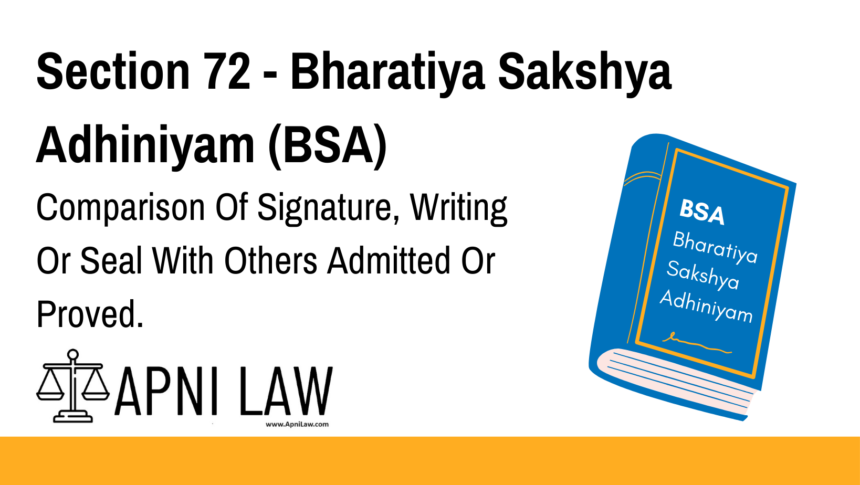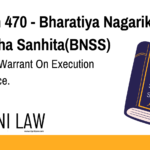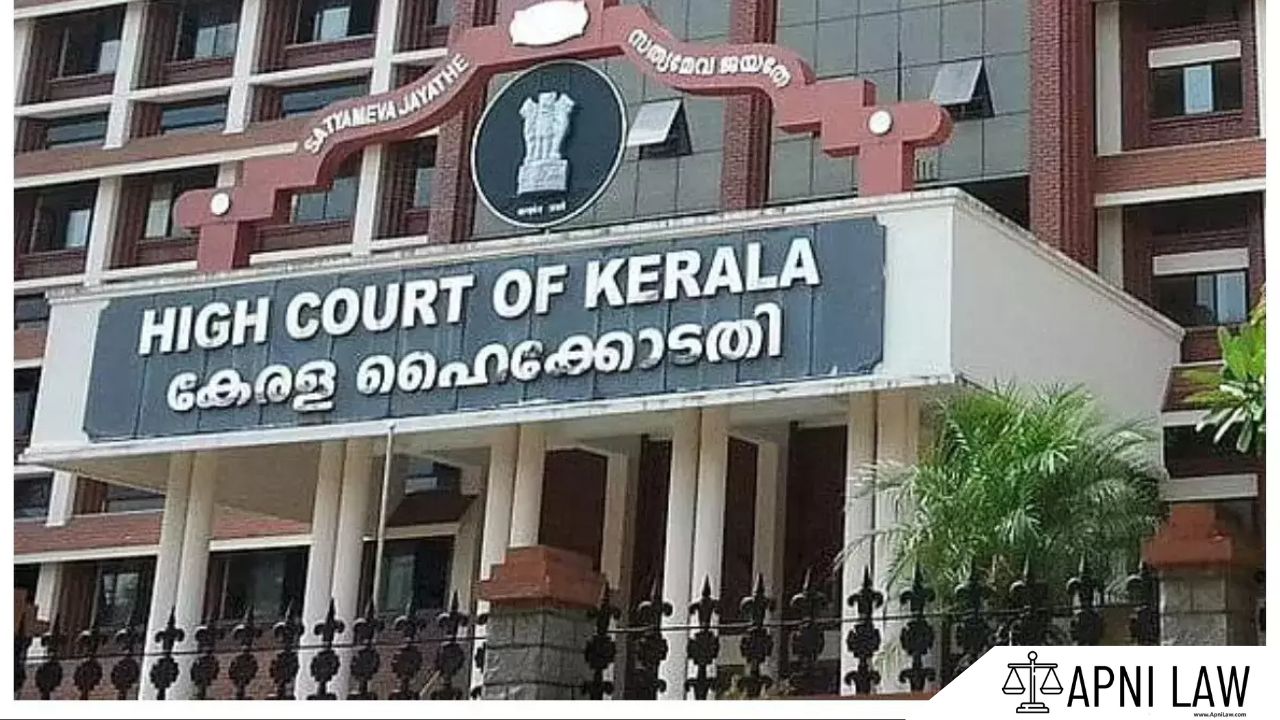Code: Section 72 – Bharatiya Sakshya Adhiniyam, 2023 (BSA)
(1) In order to ascertain whether a signature, writing or seal is that of the person
by whom it purports to have been written or made, any signature, writing, or seal admitted
or proved to the satisfaction of the Court to have been written or made by that person may
be compared with the one which is to be proved, although that signature, writing or seal has
not been produced or proved for any other purpose.
(2) The Court may direct any person present in Court to write any words or figures for
the purpose of enabling the Court to compare the words or figures so written with any
words or figures alleged to have been written by such person.
(3) This section applies also, with any necessary modifications, to finger impressions.
Explanation of Section 72 BSA
Section 72 of the Bharatiya Sakshya Adhiniyam (BSA) deals with the process of comparing signatures, writings, or seals to ascertain whether they belong to the person they are claimed to belong to. This provision is useful in cases where the authenticity of a signature, written content, or seal is disputed.
Key Points:
-
Comparison of Signatures or Writings: A signature, writing, or seal can be compared with other signatures or writings that have been admitted or proven to belong to the same person. Even if the document in question has not been produced or proved for any other purpose, the comparison can still take place.
-
Court’s Authority: The Court has the authority to direct a person in the courtroom to write specific words or figures. These can then be compared to determine if the writing matches the disputed writing.
-
Application to Finger Impressions: This section is not limited to signatures and writings but also applies to finger impressions. If there’s a dispute over a fingerprint or thumbprint, this section allows for comparison with other impressions to establish the identity of the person.
Purpose of the Provision:
This provision aims to provide the Court with a flexible mechanism for verifying the authenticity of a signature or writing, even if the document itself hasn’t been fully established. It serves as an additional tool in identifying authorship or ownership of a written record or document.
Illustration
Example:
A person is accused of signing a fraudulent contract. The signature on the contract is disputed. Section 72 allows the Court to compare the disputed signature with known, verified signatures of the accused, which could have been provided during prior interactions or even from earlier documents submitted as evidence.
Further, the Court may ask the accused or any other person present to write specific words or figures, which can then be compared with the signature on the contract to see if they match.
Common Questions and Answers on Section 72 BSA
-
Can the Court compare signatures without the document being produced for any other purpose? Yes, under Section 72, the Court can compare signatures or writings even if the document has not been used for any other purpose or admitted into evidence.
-
Can the Court ask someone to write something during the trial? Yes, the Court has the power to direct any person present to write specific words or figures to facilitate the comparison of handwriting or signatures.
-
Does Section 72 only apply to signatures and writings? No, Section 72 also applies to finger impressions, allowing the Court to compare fingerprints or thumbprints if necessary.
-
Can the Court compare writings with documents that were not produced in the current trial? Yes, as long as those other writings or signatures are proven to belong to the person in question, they can be used for comparison purposes in the current trial.
-
What if the disputed signature is not legible? If the disputed signature is unclear, the Court can still order other methods of comparison, such as asking the person to write specific words or figures to check against the original documents.
Conclusion
Section 72 of the Bharatiya Sakshya Adhiniyam is an essential provision that facilitates the verification of signatures, writings, seals, and even finger impressions in legal proceedings. It grants the Court the flexibility to compare disputed documents or signatures with other known examples, ensuring that the authenticity of such documents can be accurately assessed. This provision enhances the judicial process by providing more tools for establishing the truth in cases where signatures or writings are in dispute.
For more information on evidentiary procedures under Indian law, visit ApniLaw.








